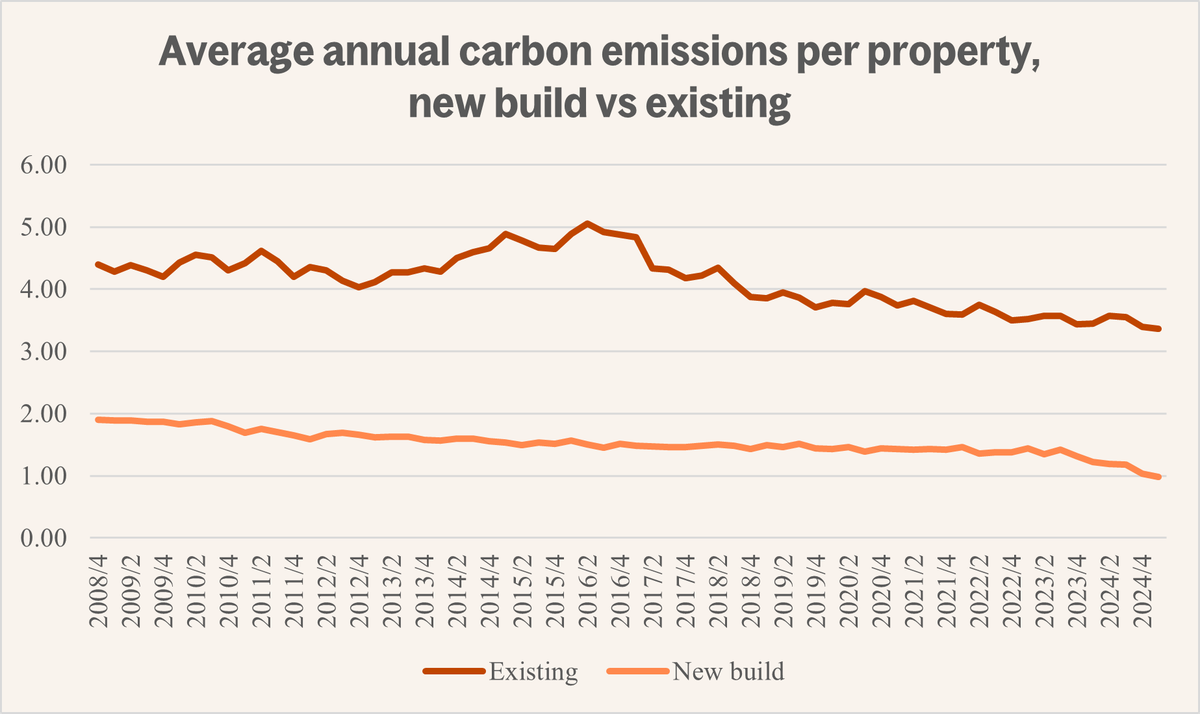Why new builds are key to the UK’s strategy for reaching net zero
Policy and Public Affairs Manager, Laura Markus, emphasises the importance of new build homes in achieving net zero and reducing carbon emissions. She urges the Government to provide long-term policies that support home building innovation and address infrastructure challenges blocking delivery.
As one of the major contributors to carbon dioxide emissions, the role that residential buildings play in the country’s journey to net zero is significant. The home building industry stands at the forefront of this transformation, with the evolution of building regulations and new technologies proving critical in reducing the carbon footprint of the homes we build. Reducing the carbon impact of our homes is not just an environmental imperative, but also an economic and societal one.

New build homes are already making major savings when it comes to carbon emissions. The average new build property now emits just under 1 tonne of carbon per year, compared to 3.4 tonnes that the average existing property emits. If we achieve the 1.5 million homes target that the Government is aiming to build this parliament, these new build homes will emit 3.75 million fewer tonnes of carbon each year than if they were built to the standard of the existing housing stock.
Since 2008, carbon emissions from new builds have been cut by 50%. That progress stems from a combination of more rigorous building regulations and significant improvements in construction materials and methods. From better insulation to energy-efficient heating systems to smarter ventilation, new homes are increasingly built with efficiency embedded at the point of construction.
While new builds are setting the pace, the majority of the UK’s housing stock is made up of older homes that remain far less efficient. These properties continue to leak heat, rely on outdated heating systems, and require substantial, expensive and disruptive retrofitting to meet even basic energy performance standards. Not only are new builds more efficient from day one, but they also reduce the demand for carbon heavy retrofits down the line.
The Government’s Future Homes Standard, due to be implemented in 2025, will require new homes to produce 75-80% fewer carbon emissions compared to homes built under current regulations.
This is a vital step forward, but we are still without so much of the necessary detail. To succeed, the industry needs more than just targets. It needs a stable, long-term policy framework. Developers and contractors require proper notice and transition periods to new building regulations so they can invest in the required skills, technologies, and supply chains without holding up new housing. Clear timelines and standardised methodologies are also key to avoiding delays and inefficiencies.
In addition, the sector needs support for innovation, including grants or incentives for adopting low-carbon heating technologies or smart energy systems. Upskilling the workforce must also be a priority, ensuring builders, engineers, and installers are trained to deliver homes that meet future standards.
Crucially, local authorities and planning departments need adequate resources to enforce standards and support low-carbon developments, particularly as demand for housing continues to grow. It is also critical that other systemic barriers, such as grid capacity, are addressed with sufficient foresight so that the delivery of low carbon homes is not held back by outdated or overburdened infrastructure.
Ultimately, new build homes represent a clear and scalable pathway to reducing national emissions. As we confront the climate crisis, we need solutions that are both practical and lasting. Building better homes today not only lightens our carbon footprint, but it also creates communities that are cleaner, warmer, and more future-proofed for generations to come.
